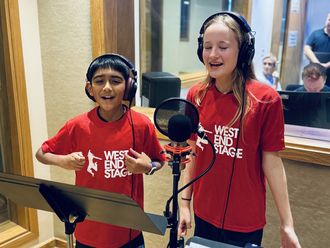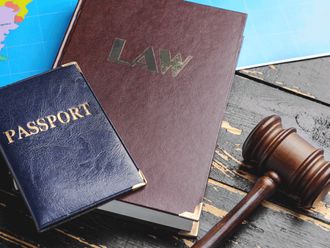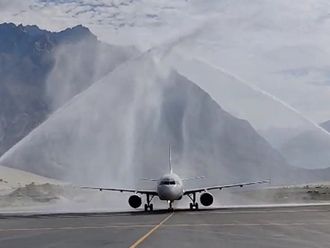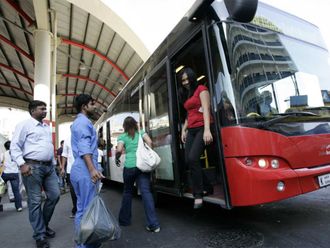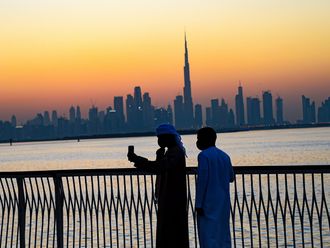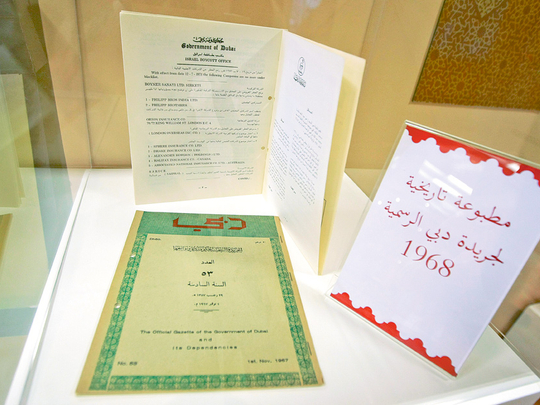
Dubai: Some of Dubai’s oldest government documents have been revealed to the public for the first time.
They include painstakingly preserved papers from the mid 1950s, almost two decades before the UAE was formed.
The Historic Documents Exhibition, at Dubai Municipality’s Deira headquarters, is a portal into the past, when Dubai was a sleepy town with few luxuries.
Monthly rations of rice and flour for Emiratis were not uncommon, shows a ration card from the 1970s.
Some decrees on show are signed by the then Ruler of Dubai, His Highness Shaikh Rashid Bin Saeed Al Maktoum. One such document, from 1971, denominates a fund in dollars — before dirhams became the UAE currency in 1973.
Another directive, to the public, calls for water conservation and public cleanliness.
Other papers are signed by many officials on one page, without identifying the people.
There are also photographs of the first girls school (1959), library (1962), bridge (1973), and sewage pipeline (1975).
Charts too are on show, such as the first city plan from 1959.
And a copy of a driver’s licence from 1958, when pedestrians were more common than cars, is another trip down memory lane.
Some of the institutions pictured are still standing — the municipality’s first building, established in 1957, can be found today next to the Spice Souq.
“It’s a museum of sorts today, with old office stamps and other equipment. The municipality is like the mother of all government departments,” said Mariam Bin Fahd, director of the municipality’s knowledge management department.
Most items on display are related to Dubai Municipality, but there are a few concerning other departments.
A copy of the Official Gazette from 1971 names companies taken off a list of firms initially boycotted for trade ties with Israel.
Another document — titled the Palestine Relief Fund — illustrates a time when companies setting up in Dubai had to contribute Dh5 towards the benefit of Palestine, Mariam said.
In addition, parts of the exhibition track Dubai’s rapid transformation, such as a series of pictures of Dubai Creek.
“Dubai 1946 shows traditional homes lining a shallow, sandy creek; no roads or street lights in sight. Dubai 2005 shows a sprawling cosmopolitan, with highways, an airport, man-made islands in the shape of palm trees, and a giant deep-water port.
Ahead of their time
“Dubai’s development demonstrates the vision of its leadership, not just now, but from before. This exhibition tells you government officials were working hard, ahead of their time, for the happiness of residents,” Mariam said.
“When Dubai started building its first underwater tunnel, people asked, ‘how are they making it; why are they making it?’”
The Shindagha Tunnel is a busy crossing point under Dubai Creek today, connecting Old and New Dubai.
“I want people to feel happy when they see this exhibition, like when you feel happy thinking about the times you shared with parents.
“Back then, there was happiness… The first schools, the first post office, the first hospital — these are services for people.”
The exhibition was recently inaugurated by Hussain Lootah, the municipality’s director-general, to mark Arabic Document Day (October 17).
The items, held in the municipality’s central archives, have been preserved under special conditions — in temperature and humidity controlled environments — so generations can continue to appreciate them, Mariam said.
She added: “By documents and documentation, generations communicate, civilisations develop. And if documents and documentation disappear, the world with all its strength will not have any document about its history to rely upon.”
The exhibition lasts till October 23 at the headquarters, after which it will be held from October 26-30 at the Al Manara branch. In the third phase, it will be held at Al Twar branch.



